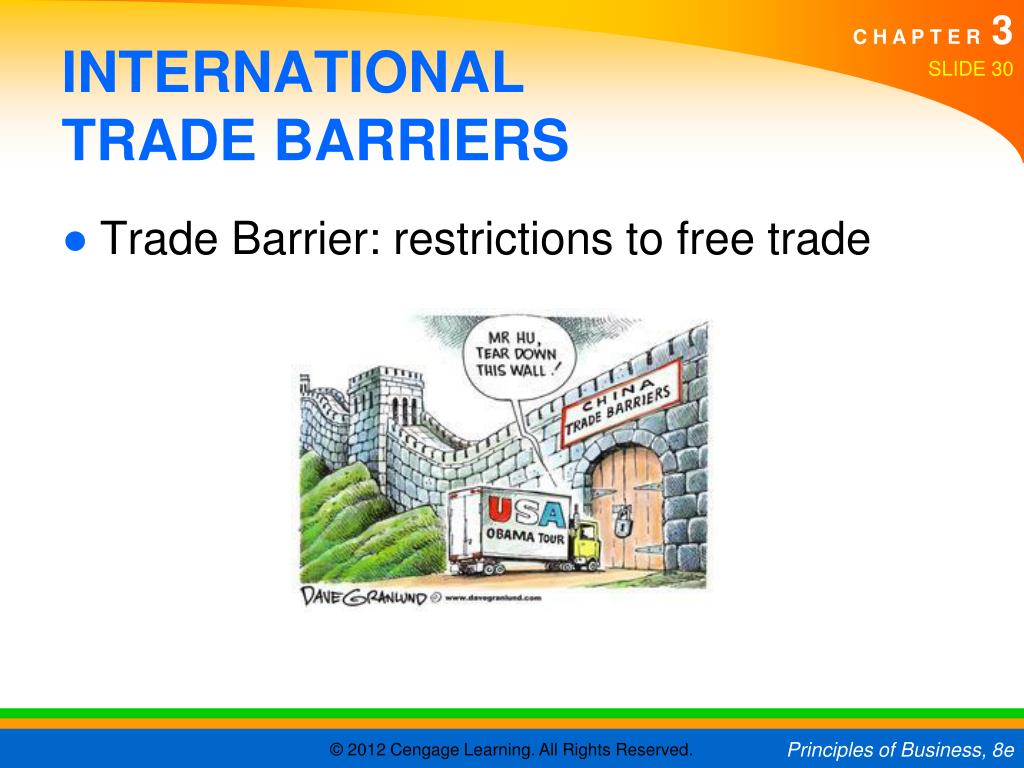International trade plays a vital role in fostering economic growth and development in Africa. However, despite the continent’s vast potential, various barriers continue to hinder the seamless flow of goods and services across borders, limiting its ability to reap the full benefits of global trade.

Image: unbrick.id
Understanding and addressing these barriers is crucial for unlocking Africa’s economic potential and promoting sustainable development. In this comprehensive guide, we explore the key barriers that impede international trade in Africa, discussing their causes and outlining viable solutions to overcome them.
Infrastructure Deficiencies
Inadequate infrastructure, including poor transportation networks, inefficient energy systems, and limited access to information and communication technologies (ICT), hampers trade efficiency in Africa.
Lack of reliable transportation infrastructure, such as well-maintained roads, railways, and ports, increases transportation costs, delays delivery times, and damages goods. Inefficient energy systems result in high energy costs, affecting production and export competitiveness. Limited ICT access hinders communication and information exchange, making it challenging for businesses to connect with potential trading partners and navigate trade regulations.
Addressing Infrastructure Deficiencies
- Governments must prioritize investment in infrastructure development, focusing on improving transportation networks, upgrading energy systems, and expanding ICT access.
- Public-private partnerships can be leveraged to attract private sector investment in infrastructure projects, fostering innovation and efficiency.
- Regional cooperation is essential for developing cross-border infrastructure, facilitating trade flows between neighboring countries.
Tariff and Non-Tariff Barriers
High tariffs and non-tariff barriers, such as quotas, licensing requirements, and complex customs procedures, increase the cost of trading and discourage cross-border commerce.
High tariffs protect domestic industries but raise prices for consumers and reduce access to affordable goods from other countries. Non-tariff barriers, often used to protect specific sectors or industries, create additional hurdles for businesses, increasing uncertainty and compliance costs.

Image: www.slideserve.com
Addressing Tariff and Non-Tariff Barriers
- Governments should adopt trade liberalization policies, reducing tariffs and eliminating unnecessary non-tariff barriers.
- Joining regional trade agreements and participating in multilateral trade negotiations can further reduce trade barriers and promote regional integration.
- Simplifying customs procedures, enhancing transparency, and promoting e-commerce can streamline trade processes and reduce compliance costs.
Limited Access to Trade Finance
Access to affordable trade finance is crucial for businesses to engage in international trade, especially for small and medium-sized enterprises (SMEs).
However, limited access to credit, high interest rates, and stringent collateral requirements hinder businesses from obtaining the necessary financing to import goods or expand their exports. This constraint particularly affects SMEs, which often lack the financial track record and collateral required by traditional lenders.
Increasing Access to Trade Finance
- Governments can establish trade finance facilities and provide guarantees to reduce the risk for banks and encourage lending to businesses involved in international trade.
- Developing innovative trade finance instruments, such as factoring and invoice discounting, can provide alternative financing options for businesses.
- Promoting financial literacy and educating businesses about trade finance options can enhance their ability to access the necessary financing.
Lack of Trade Information and Capacity
Inadequate access to trade information and limited trade capacity hinder businesses’ ability to make informed decisions and engage effectively in international trade.
Businesses often lack information about market opportunities, trade regulations, and potential trading partners. Limited capacity in areas such as trade negotiation, logistics management, and export marketing further constrains their ability to compete in global markets.
Improving Access to Trade Information and Capacity
- Governments should establish trade information centers and provide access to online portals that offer comprehensive trade data and resources.
- Capacity-building programs for businesses, particularly SMEs, can improve their understanding of trade regulations, export procedures, and marketing strategies.
- Collaboration with trade promotion agencies and international organizations can provide valuable support and guidance to businesses seeking to enter or expand in international markets.
Which Barriers To International Trade Exist In Africa
Conclusion
Overcoming the barriers that hinder international trade in Africa is essential for unlocking the continent’s economic potential and fostering inclusive growth. By addressing infrastructure deficiencies, reducing trade barriers, increasing access to trade finance, and improving access to trade information and capacity, Africa can create a more conducive environment for international trade and reap its numerous benefits.
Are you interested in learning more about the barriers to international trade in Africa? Share your thoughts and questions in the comments section below. Together, we can contribute to a more informed and prosperous Africa.






